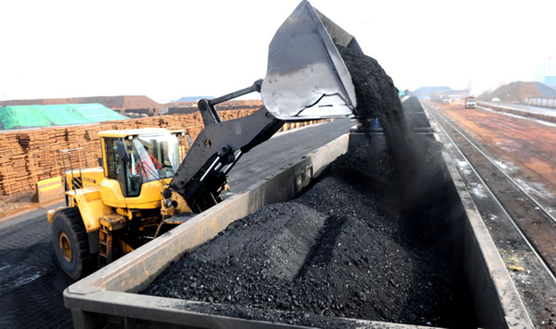Global miners keen to tap Chinese market
Source: www.chinamining.org Citation: China Daily Date: Apr.08, 2013
Global producers said they will continue to invest in China because the country`s urbanization and industrialization will continue to support iron ore demand. Fortescue Metals Group Ltd, Australia`s third-biggest iron ore producer, will invest $10 billion to expand its iron ore production capacity to meet the growing demand mainly from China, said the company`s CEO Neville Power on Sunday during the Boao Forum for Asia Annual Conference held in South China`s Hainan province. He said FMG will have 155 million metric tons of production capacity by the end of 2013 and up to 90 percent of the output will supply the Chinese market.
By then, the company`s iron ore supply will account for about 20 percent of China`s total iron ore imports. "President Xi Jinping`s remarks during the Boao Forum show that the Chinese government will continue to make efforts on economic development and improving people`s living standards and we are honored to participate in the process as a supplier for such an important resource," Power said. China`s GDP growth is set to stay at 7.5 percent to 8 percent, which means the country`s steel output will increase at 3 to 4 percent and it will create demand for iron ore, he said. Sam Walsh, CEO of the world`s third-largest miner Rio Tinto, shared similar views with Power. During the China Development Forum last month, Walsh told China Daily that China`s "enormous" economic base will create significant demand and Rio Tinto will continue to invest in China. At present, a third of Rio Tinto`s revenue is from the Chinese market. China is expected to produce 746 million tons of crude steel in 2013, 30 million tons more than last year, which will result in new iron ore demand of 50 million tons, according to figures from the National Development and Reform Commission, the country`s top economic planner. Dalian Commodity Exchange, one of the three major commodity exchanges in the country, is preparing to launch iron ore futures, hoping it can give Chinese steel companies a bigger say in iron ore prices in the international market. FMG`s iron ore business has been highly dependent on the Chinese market since it exported the first cargo of iron ore to China in 2008. So far, it has supplied more than 200 million metric tons of iron ore in total to China. In 2012, the company supplied iron ore to 52 Chinese steel mills with a closer cooperation relationship. Valin Group Co in Hunan province, one of China`s large steel companies, has become a major shareholder of FMG. "The global iron ore market is monopolized by giant producers and FMG is working on breaking the monopoly by providing more choices of high-quality iron ore to Chinese customers," said Liu Xiaodong, marketing director of the company. About CHINA MINING
Since first held in 1999, the scope and influence of CHINA MINING has grown rapidly year by year. As a global mining summit forum and exhibition, CHINA MINING Congress and Expo has become one of the world’s top mining events, and one of the world’s largest mining exploration, development and trading platforms, covering all aspects of the whole mining industry chain, including geological survey, exploration and development, mining rights trading, mining investment and financing, smelting and processing, mining techniques and equipment, mining services, etc. playing an active promotion role in creating exchange opportunities and enhancing mutual cooperation between domestic and foreign mining enterprises. CHINA MINING Congress and Expo 2013 will be held at Meijiang Convention and Exhibition Center in Tianjin on November 2-5, 2013. We invite you to join the event and to celebrate the 15th anniversary of CHINA MINING with us. For more information about CHINA MINING 2013, please visit: www.chinaminingtj.org.


 [Photo / China Daily]The Liangyungang Coal Wharf in Jiangsu province. A legislator has called for more policies to encourage greener exploration of coal to improve energy efficiency and reduce pollution.
A legislator has called for more policies to encourage greener exploration of coal in an attempt to improve energy efficiency and reduce pollution.
"Society is now striving to stop extravagance on the dinner table, but what should draw more attention is energy waste," said Bu Changsen, chairman of Shandong Energy Group, the country`s second-largest coal producer.
Bu, also a deputy to the country`s top legislature, said energy waste is extremely severe in the coal production process, which also discharges a large amount of solid waste and dust.
He said coal burning generates 70 percent of the emissions of suspended particulate matter, a major source of air pollution in China.
[Photo / China Daily]The Liangyungang Coal Wharf in Jiangsu province. A legislator has called for more policies to encourage greener exploration of coal to improve energy efficiency and reduce pollution.
A legislator has called for more policies to encourage greener exploration of coal in an attempt to improve energy efficiency and reduce pollution.
"Society is now striving to stop extravagance on the dinner table, but what should draw more attention is energy waste," said Bu Changsen, chairman of Shandong Energy Group, the country`s second-largest coal producer.
Bu, also a deputy to the country`s top legislature, said energy waste is extremely severe in the coal production process, which also discharges a large amount of solid waste and dust.
He said coal burning generates 70 percent of the emissions of suspended particulate matter, a major source of air pollution in China.

